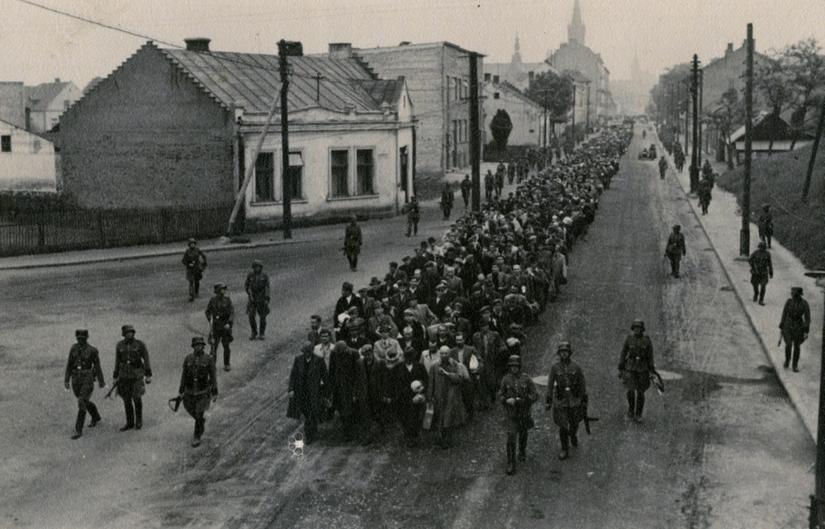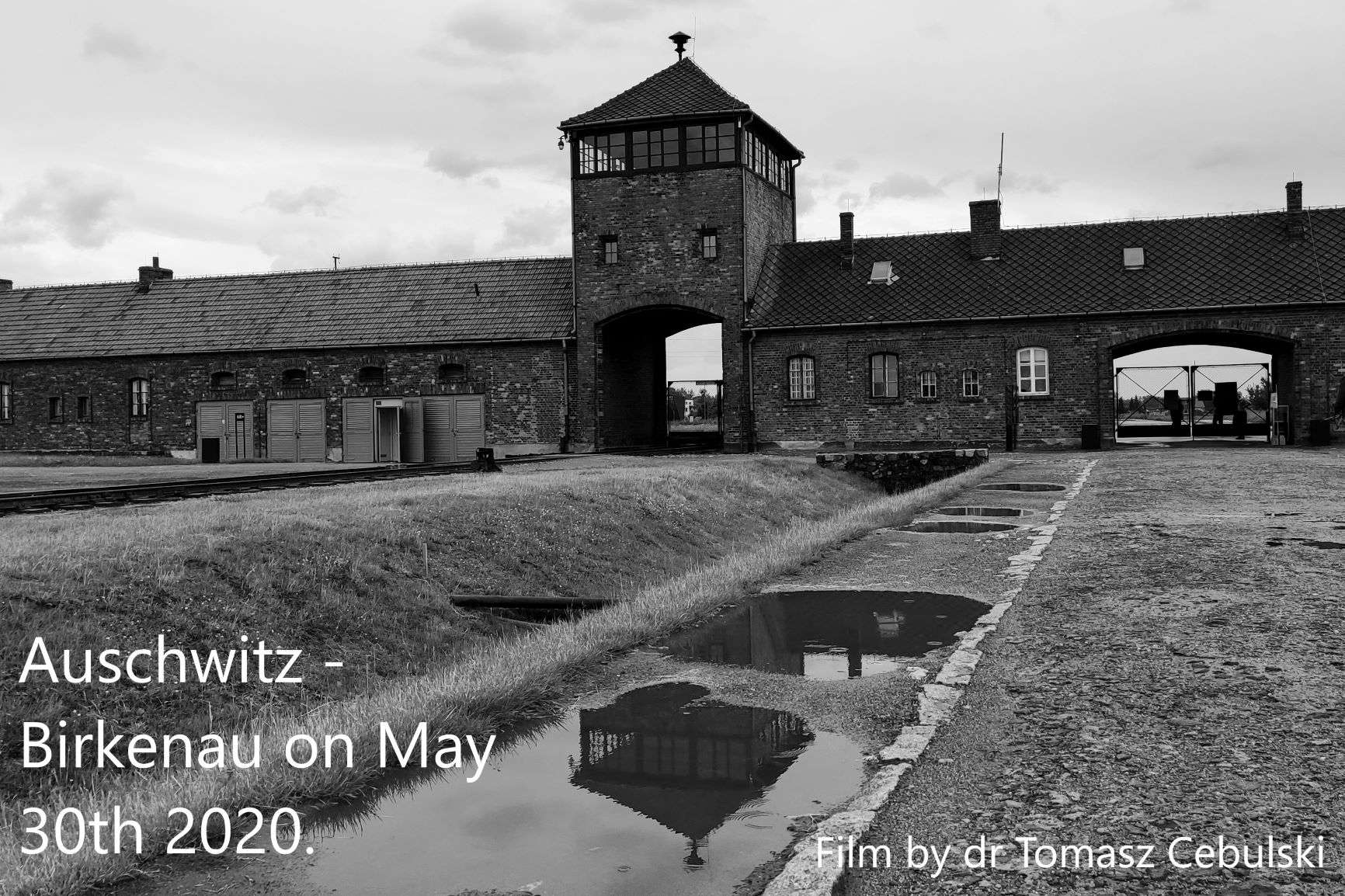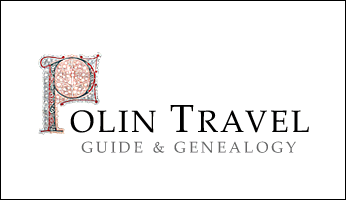News from Galicia
Tourism in the times of COVID and SKY HERITAGE PICTURES as response.
or at : https://www.youtube.com/watch?v=xjr8CpauwwM

Tourism in the age of Coronavirus resembled the seven stages of grief.
March was about shock and denial.
Observing the next and next countries closing their borders and air traffic coming to an almost complete standstill is not something that a person working in the travel industry expects in spring. Especially those working in incoming tourism had it hard to take it easy. Spring has always been the time of intense contracting, setting itineraries, and coordinating calendars. March was a runway into another interesting flight though the high season in tourism. Through the ups and downs of a guide or tour operator career in search of a better interpretation of sites, more complete education, and a full range of emotions. Not in 2020. This time March was about shock and denial. The promising take off in 2020 finished with an emergency landing. Instead of contracting new bookings, it was hard to service all the cancelations coming at once. Chaos and uncertainty were in the air sometimes making guides to ask their potential clients to just cancel instead of living in denial. Denial is a defense mechanism and helps us to accommodate the sudden change in a long time. The words of postponement or rescheduling were bringing some hope but were not offering any consoling time horizon.
The global number of confirmed COVID cases was over 700.000 in late March.
April was about pain “ without” guilt.
Our world has stopped. Museums were closed, the streets were empty. Suddenly there was too much time but ironically no time at all as adaptation into the new reality was devouring it. April for most people in the tourism sector was about asking many questions but hearing no answers. It took time to realize that from now on you need to guide yourself through terra incognita and coin the answers on your own. Luckily the travel industry always required a high level of resourcefulness which also this time was alleviating the helplessness. Social media offered a good forum for travel people to cooperate and unite but also to peep at how others adapt. It was painful to participate in yet another online conference on how to safe tourism when no time horizon of limitations is known and no one guilty for this shut down can be found. It was even more painful to walk the empty streets with a mixed feeling if it is even legal at this point to the pandemic.
The global number of confirmed COVID cases was around 3.00.000 in late April.
May was anger and bargaining.
The initial shock and denial gave place to anger. Mostly anger at and bargaining with the politicians and their various financial tools to support the travel sector. Social media were flooded with demands and questions on how to fill in the forms. The travel sector in most European countries was offered a financial drip-bag and this can never replace the real hunger for exploring and explaining, which tourism is about. This anger and lack of perspective made some of the very gifted guides to leave and follow alternative careers while others stared to look for various ways to stay in tourism but change the modus operandi and communication channels to survive. Social campaigns like “become a tourist in your own city” or marketing campaigns of various ideas of keeping the social distance while in travel were nothing more but bargaining with the unknown. By the way “social distancing” is a very poor term for the pandemic. It shall be “physical distancing” and “social closeness” especially during shut down and isolation.
Such a crisis proved to be also a good shock test for the system of travel warranties and deposits paid by clients and internal relations within the travel sector. Bargaining started about money returns, vouchers, and other forms of wining time versus winning credibility. It took me 2 months to negotiate with a respectful hotel on behalf of one of my clients who was adamant to come but as a US citizen could not land in the EU. Finally, a voucher for 24 months was issued which was far from satisfactory but marking a compromise. May was about compromise but also realizing responsibility. The same client who had to cancel the hotel in Cracow send me best regards from Minsk/Belarus in early August as this was the only European destination he was interested in and could travel to.
The global number of confirmed COVID cases was around 3.000.000 in late May.
June brought depression or “syndrome of attention withdrawal”
Working in the travel industry as a guide or tour leader becomes part of your mental DNA over time. In regular June you are set to work on the top of your game. June 2020 was rather lonely, reflective, and marked with certain tiredness of social media or online presence. Working as a guide is about communication skills, knowledge, and understanding your audience, all those are constantly putting you in the spotlight and leader position for those following your narrative. Being an actor and attracting attention gets addictive. It is even better than in theater as you can constantly communicate with your audience. You can change and improve your performance. In June 2020 the spotlights were turned off and there was no place to put up the show anymore. Many guides went through something I have diagnosed as “syndrome of attention withdrawal”. For some, it was depressing for others represented an additional stimulus. Many started to realize their talking and communication needs on-line which brought a large number of videos, lessons, and messages from all around the world. The first attempts of on-line guiding were appearing with those the eternal problem of how to capitalize on then. It was also in June when the Museums and historical sites started to work out the new sanitary security protocols for opening. Auschwitz State Museum tested the new protocols in late May, trained all of their staff though June, and opened to first visitors on July 1st, 2020. Guides returned to work and adapted fast to face shields and physical distancing.
The global number of confirmed COVID cases exceeded 10.000.000 in late June.
July was the upward turn.
July was the time to fight for return as the anger and pain gave place to limited optimism caused by internal tourism within the EU countries returning. Yes, most people had enough of closure and often against common sense decided to go somewhere, explore and sightsee. Often it was a kind of internal rebellious paradigm making people run away and travel as long as it was possible. Surprisingly, although in their own country many decided for a guide to show them a city, introduce to history, or just teach the kids something more that lazy beach holidays. Here the audio guide and voice transmission systems came as a great help to keep physical distancing. It was a pleasure to observe the guides in Constance over Bodensee doing their work and answering questions to the masked up small groups. Curiosity and the need for education were stronger than fear. The tour providers learned that under certain protocols kept exploration is possible. More and more museums started to provide outdoor events or exhibits. Participation in those proved to be for many tourists a great chance to escape and rest from the avalanche of COVID news, statistics, and political chaos. All in all culture and heritage exploration has a role of refocusing our attention from the daily, mundane to the universal and high-minded. Museums are the shines, curators, educators and guides represent various levels of the clergy.
The global number of confirmed COVID cases exceeded 17.000.000 in late July
August is reconstruction and working through.
So, let us face it, there is a pandemic. Tourism doesn’t and will never again operate in the same way as it did before March 2020. No man ever steps in the same river twice. The fear factor will remain both on the side of guides and tourists and alleviating it will become a new virtue in the guide’s profession. Respecting the procedures seriously and sometimes teaching them to visitors will become a new norm of guides and leaders. Yes, our daily performance theater will become the mask one and will demand this little extra input to regain credibility. Ignoring the threat, acting defiant is the shortest way to the next shut down which may be lethal for tourism. I have no problems anymore with starting my Auschwitz tour by teaching people how to wear a mask properly. All in all visiting Auschwitz is very much about learning responsibility for the other. Auschwitz Museum by introducing and keeping the procedures and adapting the exhibit got to at times 2000 visitors a day now. Last year the same time it was close to 8000 visitors a day. Showing and keeping responsibility brings credibility and a real sense of safety. Something we all need now. Working through is very much about adapting and diversifying the channels in which tourism operates. I am a proponent of an on-line historical preparation before the visit as a way of getting to know your guide, subject, and chronology, then the physical exploration of the historical site with keeping the procedures to finish with an on-line evaluation and Q&A session. It works miracles and in my case proved to be more educationally effective then guiding before the pandemic.
The global number of confirmed COVID cases exceeded 25.000.000 in late August
Will September bring acceptance and hope or we succumb to shock and denial again.
Time will show…but as for now the pandemic proves to be very Darwinian. Only those who adapt will survive.
I try to survive with a new visual history and historical sites interpretation project SKY HERITAGE PICTURES. https://www.facebook.com/SkyHeritagePictures
Note about the author:
Dr. Tomasz Cebulski established Polin Travel in 2000 to merge three of his passions: Jewish history, genealogy, and guiding. The last 20 years brought many explorations, genealogical finds, and emotions that proved to be transformative for him and his clients. Pursuing an academic career he doesn’t lose sight of moving his travel activities on-line with first successful on-line guided tours, on-line genealogy supported with customized films, and lectures. Tomasz Cebulski during the COVID pandemic initiated a new visual history and historical sites interpretation project SKY HERITAGE PICTURES.
Shorter version of this text was published at Jewish Heritage Europe in September 2020.
Auschwitz Museum available for visitors after coronavirus Covid-19 shutdown.

First time at Auschwitz-Birkenau Museum as guide after 141 days of absence in guiding directly at the Museum, due to COVID-19 shutdown. Within those 141 days I performed many on-line lectures and even virtual guided tours about the history and virtual space of Auschwitz, Majdanek and Treblinka. In the time of shutdown I was at those sites few times on my own to mark important anniversaries and pay tribute to victims. I have produced multiple movies and educational materials commenting on history but also the current site maintenance issues. As much as on-line version works thanks to the engagement of my multiple interested audiences it is hard to compare it with the physical presence at the site. Seeing and experiencing the physicality brings understanding.
Today I was mostly focusing on after war judiciary aspects of Auschwitz history. I would like to thank my two Hungarian/German visitors for teaching me something new.
On the practical side the issue remains how to fit face shield and hat at the same time?
80th Anniversary of the first transport of Polish inmates to KL Auschwitz. On June 14th, 1940 Auschwitz begins to function.

POLITICAL ROCK BOTTOM - ROCK BOTTOM OF AUSCHWITZ
Tomasz Cebulski, PhD
Film: https://youtu.be/zLqmMkAzulo
Is there such a thing as rock bottom in politics? A level below which you cannot possibly go in the fight for power? History has demonstrated many times over just how low you can fall, while dragging into the ideological snares your supporters, themselves addicted to the very vision of power.
Unfortunately, there exists a dangerous line in every single instance of testing such rock bottom. The line of constructing politics on hatred. Often this is the last resort in a political battle aimed at destruction. Once you cross this line, define the enemy and instill fear, society slowly slumps in a vicious circle of hatred, trampling on subsequent ethical, moral and legal norms.
This strategy is strongly engaging emotionally, thus giving quick and lasting political results. Us vs. Them. Rationality, morality, the rule of law, in other words the entire civilizational acquis, the acquisition of which requires education and intellectual effort, get replaced in the blink of an eye by primal and tribal fear, fuelling hatred. The more complex and unclear the reality, blurred in the maze of fake news and lack of factual data, the more susceptible we are to escape into a simple binary understanding of the world based on fear of the other. Such an unclear world becomes a canvas for political cynicism and the ideological definition of the enemy. Once defined, the world regains its focus, we know who is guilty, and unfortunately the path from a scapegoat to a victim is short. It takes but a few months to go from words to actions in the world of political servilism and careerism.
Up until now, the history of Auschwitz-Birkenau has been the rock bottom of this fall.
And here we are on June 14, 2020, the 80th anniversary of the first transport of Polish political prisoners to Auschwitz. Thus, the 80th anniversary of the establishment of Auschwitz by the German Nazis on the outskirts of the Polish city of Oświęcim, incorporated into the Third Reich in October 1939. 80 years ago technologically advanced humanity, deprived of ethical rationality, morality and the rule of law, under the leadership of German Nazis began the next stage of the search for rock bottom of politics based on hatred. This march had begun earlier and gone through subsequent stages. The cynical stages of gaining and maintaining power. The first was to define the enemy and to verbally strip him of his human attributes. The implantation of language excluding certain groups by using mass propaganda became the tool, and verbal hatred, physical violence as well as polarisation of the society were the results.
80 years ago, these 728 Poles deported to Auschwitz from Tarnów became victims of the language of hatred and victims of fear instigated in Germany. The event, unprecedented in those times, turned out to pass almost unnoticed by the free world. It also turned out to be merely the first step in a long march towards the gas chambers. Its next stages consisted of social exclusion, stigmatization and visual marking. From December 1, 1939 onwards, Polish Jews were marked with the sign of the Star of David visible on their clothes. Next came the physical isolation of the Polish intelligentsia in the emerging concentration camp system and of Polish Jews in the ghettos. The following stage was the administrative and technological preparation of tools of control and selective elimination of Poles as well as the total annihilation of the Jewish culture and population in Europe.
Auschwitz-Birkenau, with the entire potential of German technology based on the principles of continuous progress and the best possible practice, evolved from being a tool of control and selective destruction of Poles and other political prisoners towards the mass murder of European Jews. It may seem that in this way mankind hit rock bottom in a march of which the first note had been simple, politically oriented hate speech that excluded certain groups from humankind.
Unfortunately, in the name of a continuous, unrestrained vicious circle of ideology and amidst global indifference bordering on tacit consent, the German Nazis crossed the line of mere death in their march to remain in power. The next and seemingly last stage was the mass obliteration of traces of crimes committed. The stage of denial. Mass exhumation and burning of corpses that could have become countable evidence of committed crimes . Unfortunately, for the German Nazis the march from altering the language to mass negation that such crimes happened turned out to be very short: merely 10 years.
The last step in this genocidal march, a step made by global silent witnesses, those shocked, those who did not believe, those who turned their heads away, were forgetfulness and silence. Yes, the deafening silence resulting from the lack of understanding, from guilt and from shame, is often the only reaction of humanity in the face of genocide. This silence paralyzes the anyway weak judicial system, prevents the survivors from speaking up, and gradually leads to oblivion. Forgetting history is only one step away from repeating it. From such repetition in parts, entirety, or even improving this path of genocidal political marches for humankind.
On the eve of the 80th anniversary of the first transport of Polish political prisoners to Auschwitz and the Polish President's visit to the Auschwitz memorial, Polish television broadcast the words of one of the politicians leading in the media. Staff member of the electoral committee of that very president stated:
"[You have to] ... end the discussion about these LGBT abominations." - Let's stop listening to this idiocy about some human rights or some equality. These people are not equal to normal people."
The President speaks today on the rail tracks near Auschwitz about the political cynicism of the German Nazis.
His fascist insinuating opponent screams with anti-Semitic words about the lack of patriotism at the Auschwitz gate.
Political cynicism and historical irony at its best.
For decades, the Auschwitz-Birkenau memorial has had a great natural potential to expose political falsehood in attempts to use it for current politics. Domestic and foreign politicians alike who tried to gain political traction on genocide have remained at nearly all times powerless and ridiculed. The words of political agitation lurch in the cemetery - like silence and under the influence of Auschwitz always ricochet the author. All these appeals, calls, screams and political gestures always turn into its opposites. Hence, most politicians have long learnt to show a very reserved presence in such places. A presence intended to focus the attention of the public exclusively on Auschwitz-Birkenau itself and its history. Most, however, do not equal everyone.
Fortunately, they keep on learning.
Auschwitz-Birkenau Museum opened for two days to test the new health protection protocol.
Auschwitz Memorial / Muzeum Auschwitz opened for two days after corona virus / COVID-19 shutdown. There are new entry procedures protecting the visitors and staff. The exhibit is made more spacious to avoid exposure. There is a new outdoor exhibit providing historical context.
Film from the first day of the museum functioning after lock down: https://www.youtube.com/watch?v=_UqoYrB8q0s

The Auschwitz -Birkenau State Museum is gradually opening after coronavirus and COVID-19 lockdown.
The Auschwitz -Birkenau State Museum is gradually opening, putting the security of visitors and staff as a priority. It is not the first time when they have to walk the uncharted territory in order to make their work better. I was among the first visitors to enter and I was impressed with how professionally they manage the new reality. As for now keeping all those restrictions will be easy as the numbers of people entering are low. Latter some changes and adaptations will be made but the museum proved to be flexible when needed. They don’t let things loose. There are Museum employees reminding people discreetly to wear a mask when inside the blocks or exhibits. They have made almost the entire permanent exhibit available with blocks number 4, 5,6, 7 and 11 opened. All of the glass cabinet exhibits with documents were removed. The gas chamber and crematorium section in Auschwitz I is also available in a much larger capacity than normal. Everything the Museum did had the creation of more space in mind. Some parts of the exhibit creating narrow passages were just removed.
To make the educational experience more complete and replace for some sections which are still off-limits there were large outdoor exhibition panels installed. Showing pictures and narrating history.
Of course, as for now, there are only individual visitors permitted without museum educators or guides. Taking this into consideration I would highly recommend everyone planning to enter to do the history homework before showing up. There is an abundance of films and books to choose from preparing a visitor to understand the Auschwitz chronology and geography better. Like the book or miniseries by Laurence Rees – “The Nazis and “the Final Solution”” .
Page 3 of 8




